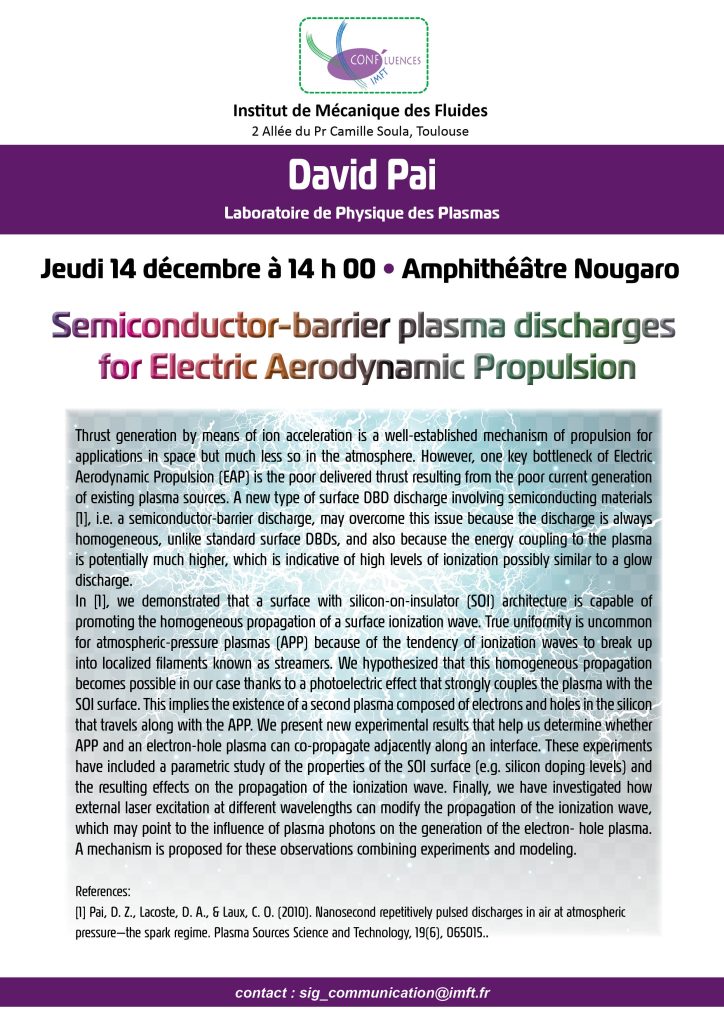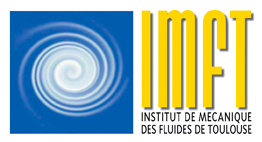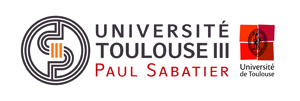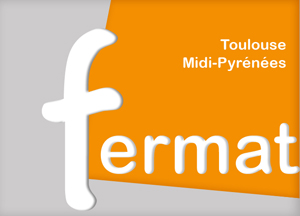Semiconductor-barrier plasma discharges for Electric Aerodynamic Propulsion

Conf’luence David Pai
Laboratoire de Physique des Plasmas
Jeudi 14 décembre à 14 h 00 – Amphithéâtre Nougaro
Thrust generation by means of ion acceleration is a well-established mechanism of propulsion for applications in space but much less so in the atmosphere. However, one key bottleneck of Electric Aerodynamic Propulsion (EAP) is the poor delivered thrust resulting from the poor current generation of existing plasma sources. A new type of surface DBD discharge involving semiconducting materials [1], i.e. a semiconductor-barrier discharge, may overcome this issue because the discharge is always homogeneous, unlike standard surface DBDs, and also because the energy coupling to the plasma is potentially much higher, which is indicative of high levels of ionization possibly similar to a glow discharge.
In [1], we demonstrated that a surface with silicon-on-insulator (SOI) architecture is capable of promoting the homogeneous propagation of a surface ionization wave. True uniformity is uncommon for atmospheric-pressure plasmas (APP) because of the tendency of ionization waves to break up into localized filaments known as streamers. We hypothesized that this homogeneous propagation becomes possible in our case thanks to a photoelectric effect that strongly couples the plasma with the SOI surface. This implies the existence of a second plasma composed of electrons and holes in the silicon that travels along with the APP. We present new experimental results that help us determine whether APP and an electron-hole plasma can co-propagate adjacently along an interface. These experiments have included a parametric study of the properties of the SOI surface (e.g. silicon doping levels) and the resulting effects on the propagation of the ionization wave. Finally, we have investigated how external laser excitation at different wavelengths can modify the propagation of the ionization wave, which may point to the influence of plasma photons on the generation of the electron- hole plasma. A mechanism is proposed for these observations combining experiments and modeling.
References:
.





